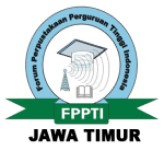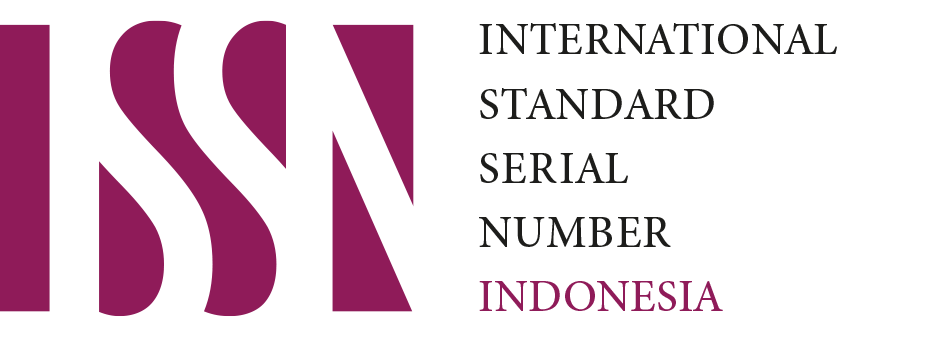Information dissemination during pandemics: a review on the Spanish Influenza and Covid-19
Downloads
Background of the study: Information dissemination could be seen as the means through which facts and information are linked to the rightful individual seekers and organizations. Due to restrictions during pandemics, health professionals and other stakeholders have the important role of disseminating information and resources on the pandemic to the public through various media channels available to them.
Purpose: This study looked into how information disseminations were carried out during the Spanish Influenza and Covid-19 pandemics based on review of literature
Method: Through the use of relevant keywords and search strategies, the study retrieved literature from Google Scholar for review. The literature were then analysed based on themes to produce a narrative report.
Findings: The study reveals that information access and dissemination were timely and speedily during the Covid-19 pandemic dur to advancements in technology whereas the dissemination of information during the Spanish Influenza were limited and rarely timely worldwide.
Conclusion: Currently, there exist a problem of misinformation and an ‘infodemic.' Due to advancements in information sharing technologies. The study recommends the need to tackle ‘infodemic' and misinformation during pandemics.
Downloads
Abd-Alrazaq A, Alhuwail D, HousehM, Hamdi M, Shah Z. (2020) Top Concerns of Tweeters During the COVID-19 Pandemic: Infoveillance Study. Journal of Medical Internet Research. 22, 190-196. Andersen, K. G., A. Rambaut, W. I. Lipkin, E. C. Holmes, and R. F. Garry. (2020). The proximal origin of SARS-CoV-2. Nature Medicine 26(4): 450–452.Barry, J. M. (2007). Nonpharmaceutical interventions implemented during the 1918-1919 influenza pandemic.Jama, 298(19),2260–2261.Bello, S.A. and Aghadiuno, P.C. (2019). nformation needs, repackaging and dissemination: sustainable library services for national development.International Journal of Arts, Languages and Business Studies(IJALBS), 2(1), 176-186. available at: www.ijalbs.com/index.php/ijalbs/article/view/56/55Brooks SK, Webster RK, Smith LE, Woodland L, Wessely S, Greenberg N, et al. (2020). The psychological impact of quarantine and how to reduce it: rapid review of the evidence. Lancet. 395:912-920Bubar, Joe. 2020). The Killer flu of 1918. www. junior.scholastic.com Cabo J.et.al.(2020).Demographic variables associated with Covid-19 mortality. Journal of Public Health Research,9(1827), 463-469.Chan, A.K.M.et.al. (2020). Socialmediafor rapid knowledge dissemination: early experience from the COVID-19 pandemic. Anaesthesia.Epub ahead of print.Cheng, Z. K. J., and J. Shan. (2020). 2019 novel coronavirus: Where we are and what we know. Infection 48(2): 155–163.Collier, R. (1974). The Plague of the Spanish Lady. The influenza Pandemic of 1918-1919. London: Macmillan.De la Garza, A. (2020). How social media is shaping our fears of –and response to –the Coronavirus. Time. https://time.com/5802802/social-media-coronavirus/Depoux A, et.al., (2020). The pandemic of social media panic travels faster than the COVID-19 outbreak. J Travel Med.,27Dhawan, S.M. (2018). Basics of information dissemination.available at: https://aladin.uil.unesco.org/paldin/pdf/course02/unit_05.pdf
Duncan, J.(2020).Two cases of coronavirus confirmed in Ghana. www.https://en.wikipedia.orgwiki "º COVID-1. Dzisi, E. K. J.et.al. (2020).Adherence to social distancing and wearing of masks within public transportation during the COVID 19pandemic.Transportation Research Interdisciplinary Perspectives.7: 100191.www. https://en.wikipedia.org/wiki/COVID-19#History.Emanuel EJ, et al. (2020). Fair Allocation of Scarce Medical Resources in the Time of Covid-19. N Engl J Med.382, 2049-2055.Ewing, E. et.al.(2000). Understanding COVID-19 in 2020 Through the Lens of the 1918 "Spanish Flu” Epidemic.CHANCE, 33(3),4-21.Fargey K. M.(2019).The Deadliest Enemy.Army History,(111), 24-39.Garrett,L.(2005).The Next Pandemic?,”Foreign Affairs, 84(4),3-23.Heffer, S. (2020). What the Spanish Flu pandemic teaches us today. New Statesman.Gruzd, S. et.al.(2020). Regions Apart: How South Africa and Nigeria Responded to COVID-19,” 2020. South African Institute of International Affairs, 1-41.Johnson, N.P.A.S. and Mueller, J. (2002). Updating the Accounts: Global Mortality of the 19181920 Spanish Influenza Pandemic, Bulletin of the History of Medicine 76,105-115.Johnson,N. P. A. S. (2004). Scottish 'Flu: The Scottish Experience of Spanish Flu.The Scottish Historical Review,83(216), 216-226.Laidlaw, P.P. (1935). Epidemic Influenza: a virus disease, Lancet i: 1118-1124.Li,C, et.al.(2020). Retrospective analysis of the possibility of predicting the COVID-19 outbreak from Internet searches and social media data, China. European Surveillance. 25.Mamelund, S-E. (1996). Redusert kjí¸nnsforskjell i forventet levealder de siste årene. Samfunnsspeielt 10(3). 13-17.Nanthini S. and Nair, T.(2020). COVID-19 and the Impacts on WomenS. Rajaratnam School of International Studies, 1-11.Okike, B.O.I. (2020). Information dissemination in an era of a pandemic (COVID-19): librarians' role. Library HiTech News, 37(9), 1-4Ortutay, B., and Klepper. D. (2020). Covid-19 outbreak means (Mis)Information overload: How to cope. The Star, https://www.thestar.com.my/tech/tech-news/2020/03/23/covid-19outbreak-means-misinformation-overload-how-to-cope.Peng, Y., and Y. H. Z. (2020). Is novel coronavirus disease (COVID-19) transmitted through conjunctiva? Journal of Medical Virology. doi:10.1002/jmv.25753Scarpa, R, et.al. (2020).May the analysis of 1918 influenza pandemic give hints to imagine the possible magnitude of Corona Virus Disease-2019 (COVID-19).Journal of Transnational Medicine,18:489, 1-12.Trilla Antoni, Trilla Guillem and Daer Carolyn,2008. "The 1918 "Spanish Flu" in Spain,”Clinical Infectious Diseases,Vol. 47, No. 5,668-673.Tumwesigye,N. M., et.al.(2020).COVID-19 Lockdowns in Africa: Their Effects and Challenges,” InCOVID-19 in the Global South, edited by Carmody Pádraig. McCann Gerard, Colleran Clodagh andO'Halloran Ciara, Bristol, Bristol University Press.World Health Organisation. (2020). Novel coronavirus (2019-Ncov) situation report-13.https://www.who.int/docs/defaultsource/coronaviruse/situation-reports/20200202-sitrep-13-ncov-v3.pdf.World Health Organization. (2020c). Coronavirus disease 2019 (COVID-19) technical guidance: Laboratory testing for 2019nCoV in humans https://www.who.int/emergencies/diseases/novel-coronavirus-2019/technical-guidance/laboratory-guidance. Wu,W.,Yang,Z.andLi,K.(2016). Internetof vehicles and applications. Internet of Things, Morgan Kaufmann,299-317.Zarocostas, J. (2020). How to fight an Infodemic. Lancet 395(10225): 676. https://doi.org/10.1016/S01406736(20)30461-X.Zoumpourlis, V.(2020).The COVID-19 pandemic as a scientific and social challenge in the 21st century".Molecular Medicine Reports.22(4),3035–3048.
Copyright (c) 2021 Isaac Kyere, Philip Kwaku Kankam

This work is licensed under a Creative Commons Attribution-ShareAlike 4.0 International License.
Record and Library Journal by Unair is licensed under a Creative Commons Attribution-ShareAlike 4.0 International License.
1. The journal allows the author to hold the copyright of the article without restrictions.
2. The journal allows the author(s) to retain publishing rights without restrictions
3. The legal formal aspect of journal publication accessibility refers to Creative Commons Attribution Share-Alike (CC BY-SA).
4. The Creative Commons Attribution Share-Alike (CC BY-SA) license allows re-distribution and re-use of a licensed work on the conditions that the creator is appropriately credited and that any derivative work is made available under "the same, similar or a compatible license”. Other than the conditions mentioned above, the editorial board is not responsible for copyright violation.



 57201398420
57201398420

























